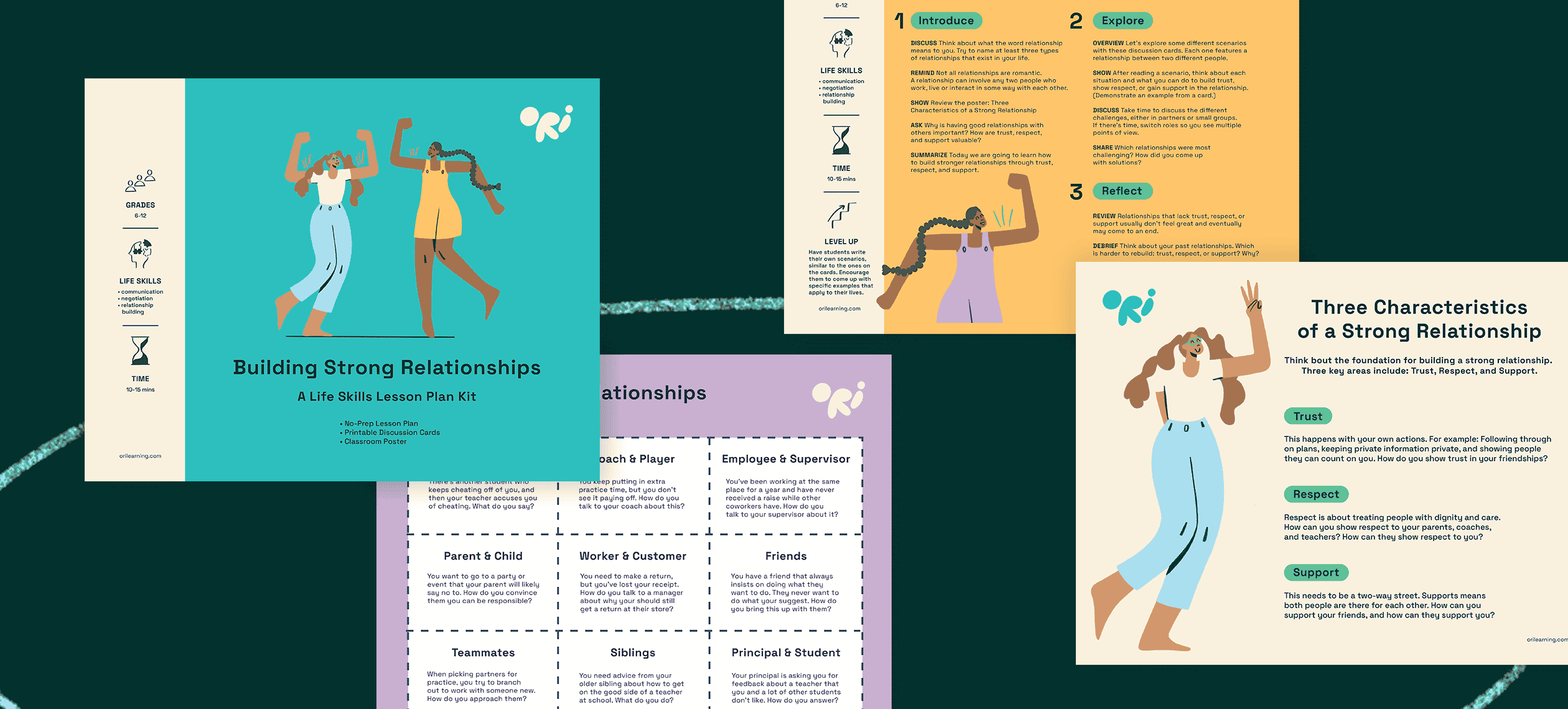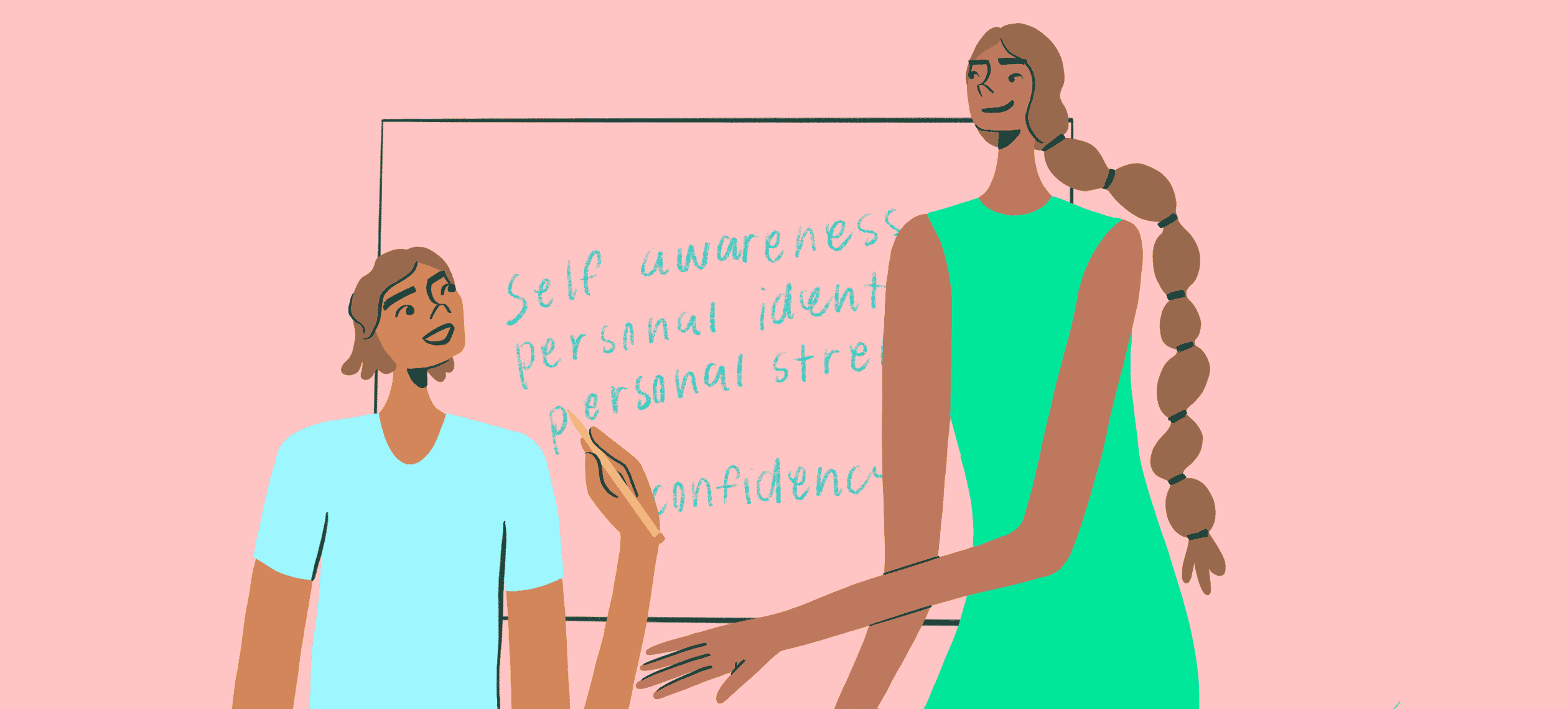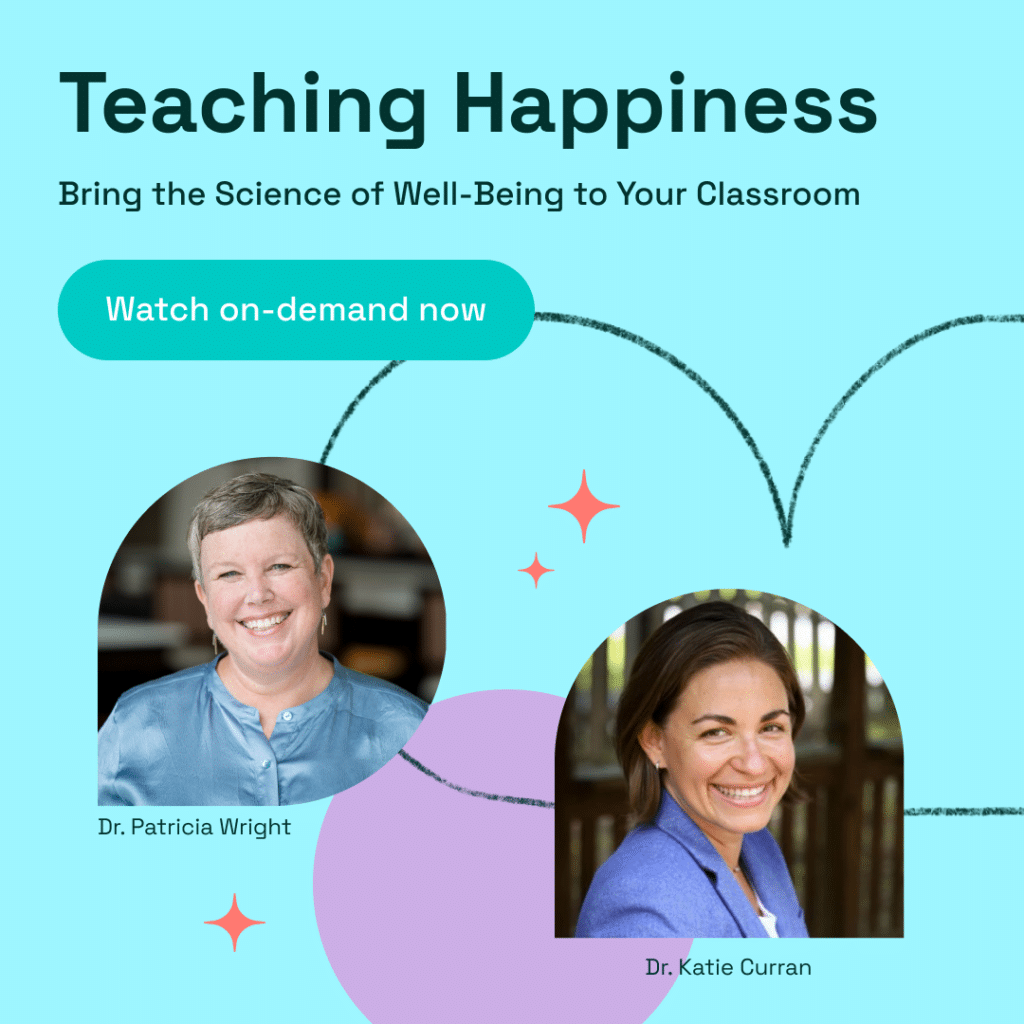


Educators know the benefits of having self-confident students. Whether working with kindergarteners or seniors, studies and articles like this one from the National Education Association have shown time and time again that students with positive self-confidence are more eager to learn, retain information better, and they’re more likely to participate in class.
Most educators also have a pretty good idea of how to encourage students and build student confidence in their own classrooms. Yet, framing can make a big difference in how students perceive or receive a teacher’s efforts. Here are 7 self-esteem building questions you can ask students to build self-identity in the classroom.
Everyone has a different way of thinking or doing things, and sometimes it just helps to let someone talk about their approach. This can be huge for helping students feel like their way has value. This is one of those questions where you ask the question and then truly sit back and listen. Plus, even if you have a pretty good idea of how they did something, they are likely to tell you something you didn’t think of, so it’s a great teacher-learning moment for you at the same time.

In October 2023, Dr. Patricia Wright and Dr. Katie Curran, acclaimed leaders in positive psychology and autism advocacy, delivered a transformative workshop to the Ori Learning audience. The recording of this online event offers a deep dive into the latest advances in positive psychology, equipping participants with five key elements to boost wellbeing and foster flourishing in educational settings.
Whether you’re an educator, counselor, or school administrator, this session provides immediately actionable strategies to enhance your wellbeing and that of your students, colleagues, and family. Transform your approach to wellbeing in education with practical tips from world-leading experts.
In October 2023, Dr. Patricia Wright and Dr. Katie Curran, acclaimed leaders in positive psychology and autism advocacy, delivered a transformative workshop to the Ori Learning audience. The recording of this online event offers a deep dive into the latest advances in positive psychology, equipping participants with five key elements to boost wellbeing and foster flourishing in educational settings.
Whether you’re an educator, counselor, or school administrator, this session provides immediately actionable strategies to enhance your wellbeing and that of your students, colleagues, and family. Transform your approach to wellbeing in education with practical tips from world-leading experts.

There are many students who readily volunteer to help out, but it’s important to be sure to ask other students to lend a hand as well. This can go a long way in building strong classroom teacher-to-student relationships. By asking for help, you’re letting them know that you trust them. This is huge for confidence. Hopefully, this will encourage them to have more ownership in the classroom and feel more comfortable overall.
This is another one where the framing makes a huge difference. By asking students what they found challenging, it’s an acknowledgment to them that it’s a challenging subject, assignment, or task. If you say, “Was that challenging?” it’s too easy for students to say yes or no—most likely no. But if you ask what was challenging about it, you’ll likely get an answer that is helpful to you in doing assessments and learning about your students.
There are a lot of ways to ask a question like this, including “How can I help?” or “What do you need from me?” This will let students know that you are there for them and ready to help, which will ultimately help give them a safe space and build up confidence in the classroom. Some teachers have also had success with this approach by having a suggestion box or jar that allows students to share anonymous notes or suggestions. It all depends on the classroom and students. It can feel unusual for some people to ask for feedback from their students, but after you get over that initial worry, it can be powerful.
Students can experience low self-esteem in the classroom because of how others respond to them. Negative feedback from teachers and bullying by classmates can lead to feelings of worthlessness.
Students develop self-esteem through positive experiences, achievements, recognition, and supportive environments. Encouragement from educators, peers, and family, coupled with overcoming challenges, fosters confidence and a sense of accomplishment.
Most educators have a pretty good idea of how to encourage students. Framing the subject using questions can help make a big difference in how students perceive or receive a teacher’s efforts.
It’s important to consider various factors such as overall context, learning preferences and cultural differences when incorporating these questions into classroom activities. Here are some key factors to pay close attention to when asking self-esteem building questions.
Questions such as the ones outlined above only work when integrated purposefully into classroom settings. Consider what is the best time to ask a particular self-esteem building question – the beginning of a lesson, after a challenging task, during group activities or one-to-one sessions? Also make sure to set aside reflection periods, and to encourage student-led discussions around the questions. In this way, you will create a more tailored and supportive learning environment that enhances the effectiveness of the proposed activity.
A student’s cultural background may to a large extent determine their response to your questions. Be mindful of the fact that there are different approaches to student-teacher interactions that stem from varying cultural norms. To avoid putting students in the spot and jeopardizing your efforts, familiarize yourself with the classroom make-up, learn about communication preferences and school etiquette and consider what impact these factors might have to students’ reactions to your questions.
Just like cultural differences can play a role in student responses, so can diverse learning styles. Some students might be more comfortable answering your questions up-front for the whole class to hear. While others might prefer an anonymous written response. Still others may be more inclined to give a creative response to an otherwise straightforward question. Make sure you have accommodations in place for each of these response options and encourage students to go with whatever feels most natural to them.
Finally, to ensure consistency and intentional use of the questions, consider integrating them into your existing lesson plans or building a whole lesson around self-esteem. Explore how to structure a self-identity discussion and what activities you can utilize to promote engagement. As self-identity and self-esteem can be tough topics to tackle for middle and high-school students, engaging activities can really help make this process easier.
Get a clear understanding of what an effective self-identity lesson plan – delivered in 15 minutes or under – should look like. Download our free Life Skills Lesson to get started with effective self-confidence teaching strategies.
